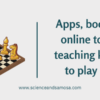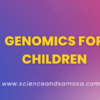How to Create an Encouraging Learning Environment for Neurodiverse Students

Educators have a key role in empowering neurodiverse learners and helping them contribute to mainstream life, thought, and culture. But as a society, we often overlook the needs, talents, and skills of neurodiverse learners, including students with autism, ADHD, and dyslexia. While such human differences tend to be misunderstood and even pathologized, there are distinct strengths associated with each unique neurological design.
Neurodiversity describes the idea that neurological differences like autism, ADHD, and dyslexia are natural human variations that have benefits. (Rentenbach & Prislovksy, 2016).
Nobel Prize-winning biologist Carol Greider (learning disabilities); director Steven Spielberg (ADHD); animal engineer Temple Grandin (autism); opera singer Gloria Lenhoff (intellectual disabilities); and former U.S. president Abraham Lincoln (emotional and behavioral disorders)
What is Neurodiversity?
Neurodiversity as a term is used as an umbrella phrase describing the different ways our brains produce the chemicals that allow them to function. Those individuals who don’t struggle to meet the needs of the average workplace are referred to as “neurotypical.”
Individuals who live with ADD, ADHD, autism, dyslexia, dyspraxia, depression, anxiety, and other types of neurodiversity operate under the label “neurodivergent” or “neuroatypical.”
Driven by both genetic and environmental factors, an estimated 15-20 percent of the world’s population exhibits some form of neurodivergence.

Bring Neurodiversity to School
Hire supportive and well-trained teachers and staff
Teachers should be trained on neurodiversity and trained on using strategies that focus on student strengths instead of student weaknesses. They must familiarize themselves with the lives of famous neurodiverse people and teach students in both regular and special education classes about these individuals’ accomplishments. Teachers must also be active agents in facilitating neurodiverse students to foster relationships with their friends.

Help children discover their strength
If our only knowledge about students with special needs is based on the negatives in their lives, our ability to help them succeed will be seriously compromised. Instead, help children understand their strengths and provide a sense of meaning and purpose to their life. Individuals with autism, for example, appear to do better than typically developing people on the Embedded Figures Test, which requires focusing on small details within more complex patterns. Students with dyslexia often demonstrate superior artistic abilities. Students with learning disabilities also often show higher-than-average entrepreneurial ability. Many kids with ADHD, for example, have a tendency to seek novelty, an important prerequisite for creative behavior. Children with bipolar disorder have scored higher than other children on a popular test of creative thinking. People with Williams syndrome often show well-developed musical capacities and interests. Down syndrome, for example, has been referred to as “Prince Charming syndrome” because of the friendly attitude and disarming smiles of many people with this genetic difference.
Digital tools and technologies
Use Assistive Technologies/Digital tools or devices and methodologies/designs that can improve access for students with disabilities while also benefitting the rest of the class. Neurodiverse students are more likely to learn if the information is presented to them in a range of ways that play to their strengths and interests. Technology can range from a simple reading ruler or magnifying glass to more advanced computer software, alternative keyboards, virtual reality, and speech-to-text technology. Students with autism often have acute sensitivities to noise and physical contact. Strategies that muffle sounds through earplugs or ameliorate kinesthetic challenges through weighted vests may result in fewer emotional meltdowns or negative social interactions.
Create inclusive environments
The classroom environment needs to be a space where neurodiverse students feel accepted and valued for being who they are. When neurodiverse students feel a sense of belonging, they are more likely to actively participate and engage with their learning.
Create a system of support, or ‘network of human relations
This could be academic coaches, personal tutors, or parents. They must encourage students to set their own goals and targets for learning, build insight into their own strengths and weaknesses, monitor their own progress, and effectively communicate with teachers when they feel they need help.
A neurodiversity-affirmative school and support network system can create an environment that ensures both the existence of neurodiversity and the views of the neurodiversity paradigm, to the benefit of students and society. Creating positive ecosystems within which students with learning differences can learn according to their strengths rather than their weaknesses, can help these students become who they are truly meant to be.







